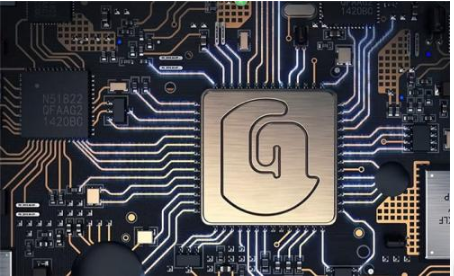
PCB layout is a printed circuit board. printed circuit board, also known as printed circuit board, is a carrier for regular connection of various electronIC components.
PCB layout is translated into Chinese as printed circuit board layout. In the traditional process, the circuit board is printed and etched, so it is calLED printing or printed circuit board. People can not only avoid wiring errors in the installation process by using printed boards (before the emergence of PCB, electronIC components are connected through wires, which is not only complicated but also has potential safety hazards). Paul, an Austrian, was the first to use PCB. Eisler was first used in the radio in 1936. Widely used in the 1950s.
characteristic

At present, the electronic industry has been developing rapidly, and people's work and life are inseparable from various electronic products. As an indispensable carrier of electronic products, PCB also plays an increasingly important role. Electronic equipment presents the trend of high performance, high speed, light and thin. As a multidisciplinary industry, PCB has become one of the most critical technologies of electronic equipment. PCB industry plays an important role in electronic interconnection technology.
PCB layout design process
Conventional PCB design includes several steps such as library building, grid adjustment table, layout, wiring and file output, but conventional PCB design process is far from meeting the increasingly complex high-Speed PCB design requirements.
PCB
Because SI SIMulation, PI simulation, EMC design, board process, etc. need to be closely integrated into the design process, and in order to achieve quality control, review links need to be added at each node. The actual PCB design process is much more complex. The figure shows the typical PCB design process of Yibo Technology, a pcb design company, which can better solve the problems caused by high-speed design.
1、CADence Allegro
Cadence Allegro system interconnection platform can design high-performance interconnection across integrated circuit, package and PCB. Using the platform's collaborative design approach, engineers can quickly optimize the system interconnection between I/O buffers and across integrated circuits, packages, and PCBs. This method can avoid hardware rework, reduce hardware cost and shorten design cycle. The constraint driven Allegro process includes advanced functionality for design capture, signal integrity, and physical implementation. Because it is also supported by Cadence Encounter and Virtuoso platforms, Allegro collaborative design method makes efficient design chain collaboration a reality.
2、MentorGraphics PADS
Mentor Graphics is a leading manufacturer of electronIC design automation technology. It provides complete software and hardware design solutions, enabling customers to launch powerful electronic products in the MARKet in a short time at the lowest cost. Nowadays, circuit boards and semiconductor components have become more complex. With the deep submicron process technology being applied in the system single chip design, the difficulty in converting a creative idea into a product on the market has increased significantly; To this end, Mentor provides innovative products and complete solutions to enable engineers to overcome the design challenges they face.
3、MentorGraphics WG,EN
MentorGraphics WG, EN is a high-speed circuit simulation tool.
4、AlTIum designer
AlTIum Designer is an integrated electronic product development system launched by the former Protel software developer AlTIum Company, mainly running on the Windows operating system. Through the perfect integration of schematic design, circuit simulation, PCB drawing and editing, topology logic automatic routing, signal integrity analysis, design output and other technologies, this software provides a new design solution for designers, so that designers can easily design, and skilled use of this software will greatly improve the quality and efficiency of circuit design.
5、Zuken CR
In addition, you should also know the basic knowledge of circuit, the principle analysis of circuit diagram, the performance and role of common PCB components, and be able to read and understand the rules for setting.
Driven by Moore's Law, the electronic industry has seen PCB products become more and more powerful, with higher integration, faster signal speed, and shorter product development cycles. Due to the continuous miniaturization, precision and high-speed of electronic products, PCB design should not only complete the circuit connection of components, but also consider the challenges brought by high-speed and high-density.
PCB design is no longer an accessory of hardware development, but an important part of "front-end IC, back-end PCB, SE integration" in product hardware development.
IC company not only completed the development of the chip, but also gave a typical design reference.
The system engineer completes the IC model selection and function definition according to the product function needs, and completes the schematic diagram development according to the principle reference design of the IC company; The work of traditional hardware engineers in circuit development has gradually decreased, and the work of circuit development has gradually shifted to IC engineers and PCB engineers.
According to the principle scheme provided by the system engineer, the PCB engineer, with the cooperation of the structural engineer, and with the overall consideration of SI, PI, EMI, structure, and heat dissipation, completes the PCB design according to the processing technology and capacity of the current Pcb factory.









